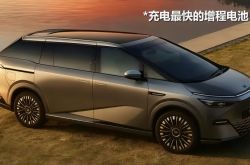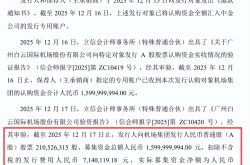"Burdened" Sunwonda Power: Can It Break Through from Multiple Sides?
![]() 09/11 2024
09/11 2024
![]() 424
424

Original content by New Energy Insights (ID: xinnengyuanqianzhan)
Sunwonda's "burdened" financial report has once again hit investors where it hurts.
Sunwonda Electronic Co., Ltd. (hereinafter referred to as "Sunwonda," the main listed company) conducts its lithium-ion battery business through Sunwonda Power Technology Co., Ltd. (hereinafter referred to as "Sunwonda Power"), in which Sunwonda holds approximately 40% of the shares.
After Sunwonda released its latest financial report, an investor left a comment stating that the company's annual report showed a loss of 2 billion yuan in its power battery business in 2023, and the first-quarter report for 2024 indicated a loss of 500 million yuan in the same business, which has severely impacted the parent company's profitability and market valuation. They asked whether the company would consider selling this loss-making business.

Image/Investor Comment
Source/Screenshot from New Energy Insights, internet image
Recently, Sunwonda responded that the annual report and first-quarter report data should be based on the periodic reports disclosed by the company on the Cninfo website, stating that it is "temporarily in a state of loss."
Public information shows that from 2020 to 2023, Sunwonda Power suffered losses of 710 million yuan, 1.06 billion yuan, 1.09 billion yuan, and 1.56 billion yuan, respectively.
According to Sunwonda's 2024 first-quarter earnings presentation, Sunwonda executives stated that the power battery business incurred a loss of approximately 400 million yuan. A simple calculation suggests that Sunwonda Power's loss for the year may be around 1.6 billion yuan.
It is evident that Sunwonda Power's losses are widening.
This raises investors' concerns about "severely affecting the parent company's profitability."
It is worth noting that Sunwonda's 2023 annual report revealed that Sunwonda Power's net operating cash flow was nearly -1.053 billion yuan, indicating that its cash generation capabilities need improvement.
Abandoning Sunwonda Power is unrealistic for the parent company, Sunwonda. Recently, Sunwonda Power has been active, such as spinning off to list in Hong Kong and securing battery supply contracts for Xiaomi's new vehicles and Li Auto's BEV models.
In fact, this also reflects the financial and market pressures faced by Sunwonda Power. Media outlets have quoted insiders as saying that one of the key factors for automakers to select them for supply contracts is their "low-price strategy."
Exchanging price for volume and prioritizing market share over profits has long been the survival rule for second-tier battery manufacturers.
Can Sunwonda Power, with its consecutive years of losses and tight cash flow, turn things around by relying on its parent company, or will it plunge into the abyss?
1. Sunwonda's Financial Report Is Full of "Lack of Funds"
On April 26, Sunwonda released its first-quarter 2024 earnings report.
The data showed that Sunwonda achieved operating revenue of 10.97 billion yuan, up 4.74% year-on-year but down 18.96% quarter-on-quarter; net profit attributable to shareholders was 320 million yuan, up 293.5% year-on-year and 16.93% quarter-on-quarter; gross margin reached 16.52%, up 2.84 percentage points year-on-year and 1.5 percentage points quarter-on-quarter.
Despite these seemingly impressive results, they cannot conceal Sunwonda's debt pressures.

Image/Supplier Debts
Source/Screenshot from Sunwonda's First-Quarter Report 2024, New Energy Insights
As of the end of March, Sunwonda had 17.1 billion yuan in cash on hand and 12 billion yuan in accounts receivable, while its short-term borrowings exceeded 8.4 billion yuan, interest payable exceeded 400 million yuan, and nearly 19.3 billion yuan in "bills payable" and "accounts payable," primarily consisting of supplier debts.

Image/Supplier Debts
Source/Screenshot from Sunwonda's 2019 Annual Report, New Energy Insights
Comparing Sunwonda's financial reports over the years, we can see that its supplier debts were around 9.5 billion yuan in 2019, 19.1 billion yuan in 2023, and increased by 200 million yuan in the first quarter of this year.
In just a few short years, Sunwonda's supplier debts have doubled, shifting the financial pressure but also introducing hidden risks to the supply chain. In reality, too many businesses have been dragged down by unpaid debts.
On the other hand, Sunwonda's interest-bearing liabilities have continued to expand, from approximately 6 billion yuan in 2019 to over 18 billion yuan in 2023.
Undoubtedly, Sunwonda is facing tight cash flow, which is why it frequently raises funds from the capital market, including through private placements. Spinning off Sunwonda Power to list independently and raise funds has become one of the parent company's most urgent needs.
Therefore, we can also see that Sunwonda is trying to make its financial statements look better.

Image/Projects Under Construction
Source/Screenshot from Sunwonda's 2023 Annual Report, New Energy Insights
For example, in terms of projects under construction, Sunwonda adopts a "squeeze the toothpaste" approach. In 2022, Sunwonda had 8 billion yuan in projects under construction, while only 4.1 billion yuan was added to fixed assets in 2023; in 2023, projects under construction amounted to 10.6 billion yuan, while only 400 million yuan was added to fixed assets in the first quarter of 2024.
What are the benefits of this approach? By not allocating too many costs, current profits naturally look better. Even though Sunwonda's Chairman and President Wang Wei confirmed that the power battery business was still incurring losses in the first quarter, these losses are still noteworthy.
2. Battery Mix-and-Match Strategy
As stated by Sunwonda officials, the reason for Sunwonda Power's losses is that "the sales volume of power batteries is not sufficient."
According to data from Korean market research firm SNE Research on global power battery installations in 2023, Sunwonda had an installation capacity of 10.5 GWh, accounting for a 1.5% market share, narrowly squeezing into the top ten globally, with five Chinese companies ahead of it.

Image/Global Power Battery Installations in 2023
Source/Screenshot from the International Finance News, New Energy Insights
According to the latest data from the China Automotive Battery Industry Innovation Alliance, Sunwonda has been overtaken by Hive Energy in domestic power battery installations from January to May 2024, dropping to seventh place.
Within the industry, Sunwonda entered the power battery sector relatively early. However, unlike other battery manufacturers, Sunwonda started with the research and development of power battery BMS, modules, and PACKs. After transitioning to cell production, it focused on HEV hybrid vehicle batteries. Although it achieved the top installation capacity in this field nationwide, due to industry characteristics, it has continuously been surpassed by newcomers in terms of total installation capacity.
On the other hand, in terms of vehicle models equipped, Sunwonda seems to lack the strong endorsement of traditionally renowned brands. According to data from Autohome and brokerages, around 60% of Sunwonda's supply in 2023 went to models priced below 150,000 yuan, with Wuling Bingguo accounting for approximately 20%. Low-end models are highly sensitive to battery prices, and the high proportion of supply to these models explains Sunwonda Power's loss situation mentioned earlier.
An insider also stated that even with low-end models as a base, Sunwonda Power's lithium-ion battery utilization rate in 2023 was significantly below 50%.
With losses on one hand and difficulties in selling on the other, Sunwonda's predicament is indeed challenging to resolve.
Recently, media outlets have reported that Sunwonda Power has secured battery supply contracts for Li Auto's M8 and M7 models, as well as Xiaomi's third vehicle model.
It is reported that Xiaomi's third vehicle is positioned in the 150,000 yuan price range, and "cost orientation" is one of the key factors for selecting Sunwonda as a supplier, as the "system-level quotation may be below 0.5 yuan per watt-hour."
There is a certain basis for the cooperation between Li Auto and Sunwonda, albeit an unspoken mixed-battery strategy. After consumers became aware of this, several related complaints appeared on online complaint platforms.
Several consumers expressed that Li Auto uses a "mystery box" approach to equip Sunwonda batteries, which not only weakens the battery brand but also reduces the battery capacity and range, depriving them of their right to know about the downgrades, which they find "truly puzzling."
Faced with numerous consumer questions, both Li Auto and Sunwonda chose to remain silent.
Industry insiders also pointed out that Li Auto's move is obviously driven by cost control considerations, while Sunwonda naturally adopts a "price-for-volume" strategy. At the same time, if Sunwonda's batteries are installed in star models like Li Auto's, it serves as excellent publicity.
3. Can Spinning Off and Listing Provide a Solution?
The cost of exchanging price for volume is not making money, or making less money, resulting in "increasing revenue without increasing profits."

Image/Revenue of Nearly 11 Billion Yuan
Source/Screenshot from Sunwonda's First-Quarter Report 2024, New Energy Insights
In fact, many investors have long questioned this issue: Sunwonda's first-quarter revenue exceeded 10 billion yuan, but its net profit was only 300 million yuan, and its net profit after deducting non-recurring gains and losses was less than 300 million yuan.
As mentioned above, this may be the best data Sunwonda can present.
For Sunwonda, its primary consumer battery business, which accounts for about 60-70% of its revenue, is profitable, while its power battery business is a "drag."
The spin-off and listing process is already underway. Last July, Sunwonda announced its intention to spin off its controlled subsidiary, Sunwonda Power, and list it on the ChiNext board of the Shenzhen Stock Exchange. This move officially initiated the IPO process for Sunwonda Power.
On October 17, 2023, the China Securities Regulatory Commission's website disclosed that Sunwonda Power filed for listing Tutoring registration with the Shenzhen Stock Exchange Regulatory Bureau on October 16. The filing report showed that Sunwonda Power signed an IPO Tutoring Agreement on October 15 of the same year, with CITIC Securities as the sponsor.
Unfortunately, Sunwonda Power has been consistently loss-making, compounded by changes in the STAR Market's listing requirements this year, which have tightened the entrance criteria and imposed stricter scrutiny on unprofitable companies seeking to list.
For example, the STAR Market requires applicants to meet the following four criteria simultaneously:
Over 5% of revenue is invested in R&D in each of the last three years, or the cumulative R&D investment exceeds 80 million yuan in the last three years;
Research and development personnel account for no less than 10% of the total number of employees in the current year;
More than seven patents that can be industrialized and applied to the company's main business;
The compound annual growth rate of revenue exceeds 25% in the last three years, or revenue in the most recent year exceeds 300 million yuan.
These requirements have increased the difficulty for companies like Sunwonda Power to seek listing on the STAR Market.

Image/Industry Distribution of A-share IPOs
Source/Internet, Screenshot from New Energy Insights As shown in the image above, the total fundraising amount and the number of IPOs in the first half of 2024 have significantly decreased compared to 2023. Recent news suggests that Sunwonda Power is about to spin off and list in Hong Kong, reflecting its urgency for listing and fundraising. Listing in Hong Kong may be another way out for Sunwonda Power. Although the Hong Kong stock market is weaker than the STAR Market in terms of brand endorsement and secondary market liquidity. Given Sunwonda Power's current financial pressures and the fierce market competition, actively expanding financing channels and obtaining more funds to increase market share and R&D investment is undoubtedly the optimal solution for breaking through the surrounding difficulties. In the face of market and investor skepticism, Sunwonda Power's top priority is still to achieve profitability as soon as possible, as "living off savings" is not a sustainable solution.





